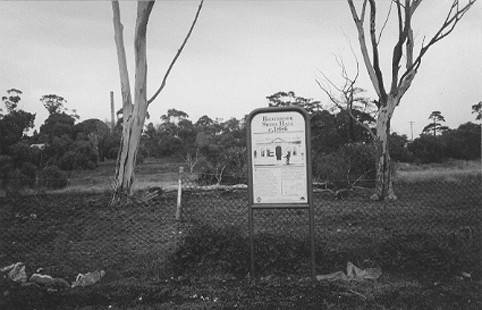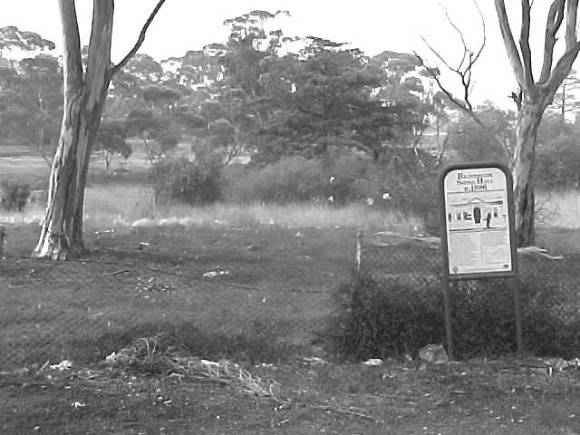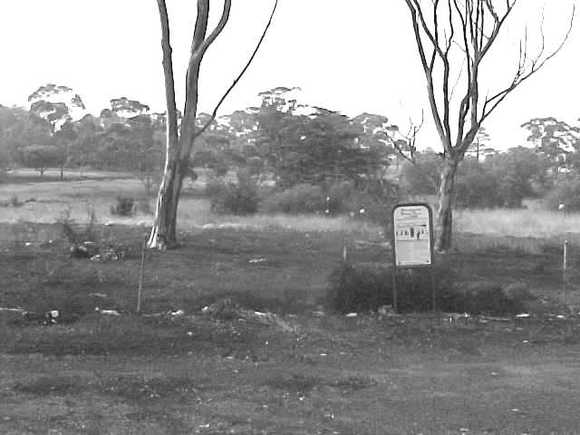| Back to search results » | Back to search page » |
|
Braybrook Shire Hall site
LocationBallarat Road, DEER PARK VIC 3023 - Property No 127
File Number1601LevelIncl in HO area contributory |
|
Statement of Significance
Individual place statement of significance::
The site of the former Braybrook Shire hall is of local archaeological significance for its potential to reveal evidence of the beginnings of municipal government in the City of Brimbank. This site is historically significant as the area which was once the local government centre of Braybrook Shire, which for many years (1871-1916) covered a large area from Maidstone, Braybrook and Maribyrnong to Rockbank and Toolern Creek at Melton. Although the bluestone shire hall, built here in 1886, no longer exists, the site is worthy of archaeological investigation.
The ICI Residential Heritage Area is of State historical and architectural significance as a rare and distinctive company township and for its association with the nineteenth century origins and twentieth century expansion of the former Nobel (later ICIANZ, now ORICA) factory which became the major private manufacturer of explosives and munitions in Australia.
The estate, initiated by Leathercloth Pty. Ltd., (a subsidiary of Nobel) is one of a number of company sponsored housing schemes in the Brimbank municipality and reflects a pattern of development where nationally important industries established in green-fields sites beyond the urban fringe and so needed to provide accommodation and other facilities for workers. The inclusion of the recreation reserve in the precinct and the adjacent separately listed Deer Park Hall, and Hunt Club Hotel (a former ICI training centre) further demonstrate the company role in local planning and development.
The precinct is significant for its association with the largest explosives, chemicals and plastics manufacturer in Australia, originally established here under the importer Jones Scott and Co in the 19th century, and then becoming the Australian Lithofracteur Company (Krebs Patent), a rival to Nobel's dynamite patent, and in production in Australia only a couple of years after Nobel's Ardeer factory was opened. It later merged with the Nobel company and then became ICIANZ before the most recent change to ORICA.
This important industry played a major role in mining through the development of progressively more efficient and safer explosives. It also contributed to wartime production in ammunition, initiators and in World War Two, the development of synthetic ammonia production and construction of the Defence Explosives Annexe No 5 (later the Albion Explosives Factory). The Leathercloth plant was influential in the development of synthetic materials for the motor industry including vinyl seat fabrics and hoods, and has continued to play an important role in synthetic fabrics.
The houses in Station Road, Ballarat Road, Hume Street and Hyde Street reflect a sequence of development in their distinctive styles and forms, reflecting the colonial origins of the company in their Indian Bungalow forms as well as giving insight to the social and economic status of their proposed occupants with the larger and more elaborate houses intended for factory managers. The inclusion of concrete houses in the estate also points to the innovation in building in the later period, possibly as a response to war-time material shortages.
The recreation reserve and contemporary (but altered) pavilion are significant in demonstrating the role of the company in providing community services to their workers, and as evidence of the urban design and landscape approaches to company housing in the period.
Group
Community Facilities
Category
Hall Public






